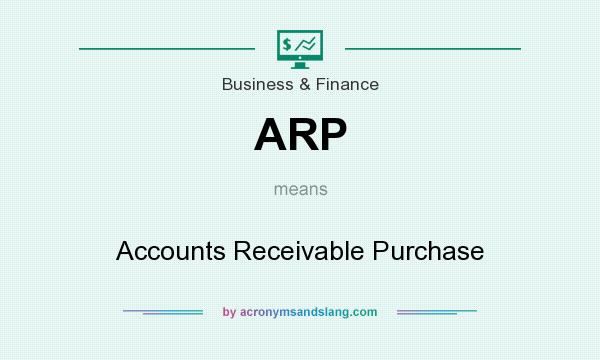The device Jones hit upon to make it occur was not to swamp the banks with brand-new loans (and security demands), but to have them make favored stock concerns that the RFC would then buy up, bestowing them with new assetsand public self-confidence. This came very close to nationalizing the nation's banking system, especially since the government could and did affect the banks' lending policies along with personnel. Most importantly, Jones insisted that not just the http://shanervnt852.theburnward.com/the-best-guide-to-what-time-does-world-finance-close wobbling banks but the largest, greatest New york city banks problem preferred stock for the RFC to buy up as well, thus imbuing the whole banking system with new public self-confidence.
1 billionor about $18 billion in today's moneyinto over half of the nation's banks through these preferred stock purchases. In insisting that all significant banks problem stock to the government, Jones was developing a precedent for the 2009 bank bailouts of the Obama presidency, which offered emergency funds to the threatened and the safe alike. However the New Dealers went well beyond the more conservative Obama officials in their semi-nationalization of the nation's monetary institutions. There were numerous who thought the administration ought to have gone all the method. "I reflect to the events of March 4, 1933 with a sick heart," Senator Bronson Cutting, a liberal Republican politician from New Mexico who had actually supported FDR in 1932, wrote later.
It was President Roosevelt's biggest error." Yet the president had no clear legal authority to take control of the country's banks, and such an effort may well have led to a lengthy court or congressional battle, at a time when the nation's financial system required to return up and running in a matter of days. Restoring self-confidence in the banking system, in the American government, in democracy itself, were priorities that would not wait. "For the government to be ready to purchase stock in a bank and market to the world that it is a partner because bank is the biggest compliment and source of strength that might pertain to any bank," Jones wrote.
Some 20 million depositors saw their cost savings saved. The huge bulk of depositors even in stopped working banks ultimately got their money back, thanks to New Offer reforms. In simply nine months, the U.S. banking system had been rebornand "BIG JESSE JONES" made the cover of Time magazine. "There was no requirement of greater authority," enthused Time, whose infatuation with Jones never dimmed, on the eve of The second world war. "Not J.P. Morgan, not even Franklin Roosevelt could be of as much comfort to the public. To many a U.S. person fantastic or little, if Jesse Jones says O.K., it's O.K." Throughout the 2008-2009 financial crisis, more than $360 billion was pumped into major monetary institutions under the Troubled Asset Relief Program (TARPAULIN).

Rather, "a frustrating majority saw the program as a no-strings-attached windfall that could be used to pay down debt, obtain other organizations or invest for the future." PNC even utilized its TARPAULIN infusions to purchase another bank, National City Corp., at a deal rate. Executive pay and rewards soon soared to tape-record highs, in spite of efforts by President Obama to include them through ethical suasion. Jesse Jones, director of the Restoration Finance Corporation, was one of the three crucial consultants FDR dealt with almost all the time, to prepare the opening salvo of the Hundred Days and the New Deal: conserving the banks (What does finance a car mean).

How How To Use Excel For Finance can Save You Time, Stress, and Money.
They was successful in suppressing bankers' self-compensation, and prodded them to start lending again. Appearing at the yearly convention of the American Bankers Association, in August of 1933, Jones bluntly urged his fellow moneymen to "be clever, for once. Take the government into collaboration with you and then go partners with the President in the healing program without stint." But lenders have smaller purposes than the federal government, and lending, under both the Obama and Roosevelt presidencies, was far from their first concern. Jones "scolded, begged, and bullied lenders to provide," particularly in "markets of the smaller sized and medium-sized type," throughout the Great Depression.
In June of 1934, Roosevelt signed legislationinitiated in part by Jesse Jones, and crafted by lead RFC counsel Tommy Corcoranthat provided the RFC and the Fed the authority to make loans directly to companies. Within 4 months, the RFC had actually loaned $30 million to personal industry, offering money any place and whenever it was needed most. Within days of his inauguration, Roosevelt had the RFC provide $22. 3 million to the Chicago Board of Education, to lastly pay those long-suffering schoolteachers. When an earthquake struck Los Angeles, $13 million in low-interest RFC loans was hurried out to the coast to assist small entrepreneurs there restore.
" No one must be allowed to suffer for an absence of food or clothing or shelter, or become mendicants, for the absence of credit for agriculture, service, and industry, small along with big," Jones informed lenders to their faces. Yet the RFC was far more than an early variation of FEMA, much as that was needed. It also supplied seed money for what showed to be a few of the most long lasting New Offer efforts. RFC loans moneyed the critical farm subsidy system set up by Farming Secretary Henry Wallace under the Agricultural Adjustment Administration (AAA). It was the RFC that funded Harry Hopkins's Functions Progress Administration (WPA) jobs, and the mortgage aids from the House Owners Loan Corporation and the Federal Housing Administration that assisted keep millions of Americans in their houses.
The thousands of EHFA credits averaged $150 a loan, enabled the sale of over one million electrical devices, and turned a profit of $175,000 which went right back to the Treasury. The RFC loaned to universities and schools, to cities and towns, and public authorities. It bought up community bonds and drove down the expense of loaning. When a syndicate of 70 Wall Street banks made the only bid on a massive public works task in New York City, the RFC stepped in to knock down the interest rates the banking cartel provided, conserving the public $3. 5 million, or about $55 million today (How to become a finance manager at a car dealership). Which of the following was eliminated as a result of 2002 campaign finance reforms?.
The agency's efficiency was indisputable. For all that it did, the RFC, at its height during the Anxiety, used just 3,200 people, and invested just one-half of 1 percent on overhead. How did we end up being the America that can't even lay a few hundred miles of track without crippling cost overruns and political gridlock? Politically, Jones was simply as indispensable to the president, a connection to both the company neighborhood "west of the Hudson" and the already effective Texas delegation in the Congress. "While the President knew I was on the conservative side, he often suggested to me that he believed my course a good remedy for the severe liberals, a sort of balance, as it were," Jones would write in his 1951 narrative, Fifty Billion Dollars.